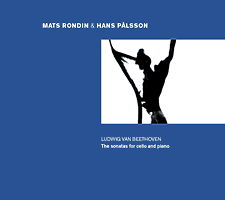
Stature and vision
Beethoven sonatas
for cello and piano -
appreciated by
JOHN BELL YOUNG'... an energetic undercurrent that sets fire to virtually every phrase.'
|

|
Even in chamber music, Beethoven always found a voice for the monumental statement. The sonatas for cello and piano are no exception. Though he wrote only five
works in this genre, they codify his life-affirming and often defiant philosophy, but also cover just as much aesthetic territory as all thirty-two of his piano sonatas.
Indeed, they collectively represent virtually every major period of his compositional life, from the post-rococo ebullience of his first sonata, composed in 1796, to
the transcendental eloquence of the last, written towards the end of his life.
What binds these unique works one to the other is the interplay of the two instruments in intricate, internecine dialogues that articulate the formal decorum of their
era. For example, the ascending theme in unison between cello and piano
[listen -- CD1 track 1, 0:03-0:43]
that inaugurates the F major sonata, Op 5, conveys as much about co-operation and
civility as the jovial, if sometimes testy exchange that informs the ensuing Allegro
[listen -- CD1 track 1, 3:09-4:12].
Only a decade later, in 1807, Beethoven's compositional vocabulary had
expanded to an extent unprecedented for the music of that day, allowing the nearly rhapsodic melisma of the great A major sonata, his third, to give shape to a
wholly different idea: musical romanticism.
Continue >>
Copyright © 22 February 2004
John Bell Young, Tampa, Florida, USA

|

